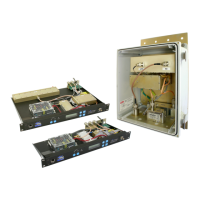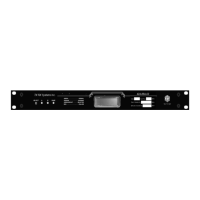How to troubleshoot loss of sensitivity in BIRD 428B-83H-01-T?
- JJoseph BrewerAug 8, 2025
If you're experiencing intermittent or continuous loss of sensitivity with your BIRD Amplifier, there could be several reasons. First, measure the sensitivity and perform a spectrum analysis. If two or more carriers exceed 35 dBm when the desense occurs, it's likely an on-channel TX is stuck. If one carrier exceeds 35 dBm when desense occurs, it indicates Carrier Desense Interference. If carriers are less than 35 dBm, suspect Transmitter Noise Interference. Check the cable, connector, and receiver for defects by testing with amplifiers A and B. Low sensitivity on only one amplifier indicates a failed amplifier. If the operation is the same on both amplifiers A and B, suspect a defective common component.


